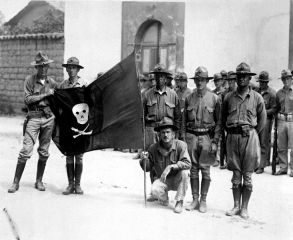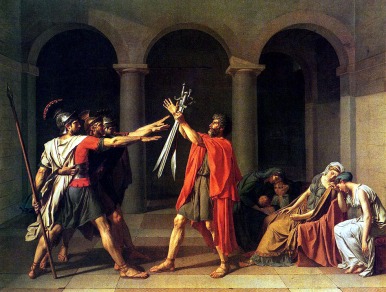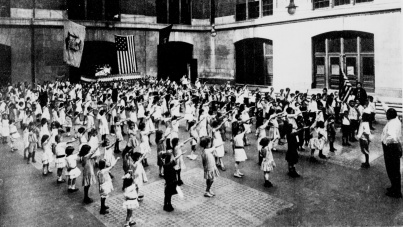 By spring 1936, the French literati George Bataille famously came to the conclusion that Fascism had to be fought with its own means. For a surrealist inclined intellectual, this meant not jibbing at the darker sides of human existence: desire, perversion, violence, torture, sacrifice, fanaticism and death. For this aspiration, Bataille has been, quite erroneously according to my view, branded “Left fascist” by Richard Wolin.*
By spring 1936, the French literati George Bataille famously came to the conclusion that Fascism had to be fought with its own means. For a surrealist inclined intellectual, this meant not jibbing at the darker sides of human existence: desire, perversion, violence, torture, sacrifice, fanaticism and death. For this aspiration, Bataille has been, quite erroneously according to my view, branded “Left fascist” by Richard Wolin.*
 I wonder whether there are connections between this aspiration of Bataille and his friends and fascist-like feature in anarchism? I’m especially thinking about the obscure anarchist “Batallón de la Muerte” aka “Centuria Malatesta” that fought in the Spanish civil war and wore uniforms that looked “fascist”, not only to us today, but likewise to the contemporary bystanders of its parade in Barcelona on the 3rd of March 1937. If anyone has information on this unlucky unit, I would be very keen to learn.
I wonder whether there are connections between this aspiration of Bataille and his friends and fascist-like feature in anarchism? I’m especially thinking about the obscure anarchist “Batallón de la Muerte” aka “Centuria Malatesta” that fought in the Spanish civil war and wore uniforms that looked “fascist”, not only to us today, but likewise to the contemporary bystanders of its parade in Barcelona on the 3rd of March 1937. If anyone has information on this unlucky unit, I would be very keen to learn.
 Already in the Russian Civil War, The Revolutionary Insurrectionary Army of Ukraine seems to have used a black flag with a skull. In the 1930s also the Sandino rebels in Nicaragua used a Jolly Roger-ish flag (in the image displayed by their adversaries, the American Marines).
Already in the Russian Civil War, The Revolutionary Insurrectionary Army of Ukraine seems to have used a black flag with a skull. In the 1930s also the Sandino rebels in Nicaragua used a Jolly Roger-ish flag (in the image displayed by their adversaries, the American Marines).
 * I find the Wikipedia article on “Left-Wing Fascism” overall misdirected. For me, if you defend the ideals of the French revolution, with whatever means, even fascist-like ones, you are undoubtedly opposed to Fascism. Maybe “fascist Left” is what the article is really about? In any case, “Left Fascism” ought to be reserved for people like Gabriele D’Annunzio in Italy, the Strasser brothers in Germany and Juan Yagüe in the Spanish Falange. So far in the history of fascism, we have recurrently seen the purging of Left Fascism within the victorious and ruling parties.
* I find the Wikipedia article on “Left-Wing Fascism” overall misdirected. For me, if you defend the ideals of the French revolution, with whatever means, even fascist-like ones, you are undoubtedly opposed to Fascism. Maybe “fascist Left” is what the article is really about? In any case, “Left Fascism” ought to be reserved for people like Gabriele D’Annunzio in Italy, the Strasser brothers in Germany and Juan Yagüe in the Spanish Falange. So far in the history of fascism, we have recurrently seen the purging of Left Fascism within the victorious and ruling parties.
 In modern times the so-called Roman salute was immortalized by Jacques-Louis David in his T
In modern times the so-called Roman salute was immortalized by Jacques-Louis David in his T